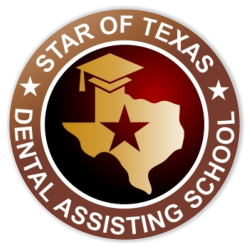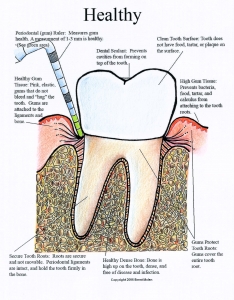We are nearly halfway through our current session of Star of Texas Dental Assisting School. Our students have learned a wealth of information on tooth morphology, dental caries, infection control, sterilization, chemical & waste management, oral diagnosis & treatment planning, radiography, impression materials, handling instruments, and much more.
One area that has sparked our students’ interest is periodontal disease and its effect on patients and their oral health.
What are the early signs of periodontal disease?
The early warning signs of every disease occur at a microscopic level. The early warning signs cannot be seen, felt, touched, diagnosed, or discovered. They cannot be noted by their symptoms. The early changes might be able to be detected by sophisticated chemical or biologic analysis, but not by normal diagnostic measures.
By the time you notice that your gums are bleeding (gingivitis), the disease has already been present for some time and it is not in its earliest stage. It is not unusual to hear, “My gums have always bled like this,” but treatment is not sought. Yet if our eyes started to bleed when we washed our faces. we would generally rush to seek medical treatment! Bleeding gums are not normal and healthy. Luckily, at this stage the periodontal disease is fairly easy to treat and is reversible. When the disease has progressed past the bleeding gum stage, you may notice some pain, gum recession, loosening of teeth, and bad breath. If you have ignored your bleeding gums (possibly the earliest sign of gum disease) because you think its normal to have a little “pink” on your toothbrush, you will likely have additional symptoms and conditions associated with disease progression. At the point the bone and gum support for the teeth may be permanently altered and diminished.
It is recommended that you adhere to the suggested time intervals for your dental cleaning appointments. We will examine your gums during your periodic dental cleaning appointments for early signs of periodontal disease. While we clean your teeth, we will note areas where it is difficult for you to remove plaque or where calculus forms and areas of gum tissue inflammation and will record probing depths, which will measure your gum tissue for signs of periodontal disease. We can then demonstrate effective oral self-care to prevent these areas from progressing into periodontal disease.
We want to help with stress prevention. Don’t wait for the warning signs of gum disease to occur before you schedule your dental hygiene appointment. If you have very few fillings, have not lost any permanent teeth (other than wisdom teeth), and have very thorough oral self-care daily, a yearly cleaning and exam by the dental hygienist and dentist may be adequate. If you have had a great deal of dental work performed (bridges, crowns, fillings) or if you have missing teeth that have not been replaced and you don’t spend time with adequate oral self-care, visiting the dental office three or four times a year might be necessary. We will let you know what is appropriate for you individual oral condition.
If you are interested in learning more about the Star of Texas Dental Assisting School, feel free to call us at (512) 487-1547 to schedule an appointment with an Admissions Representative.


